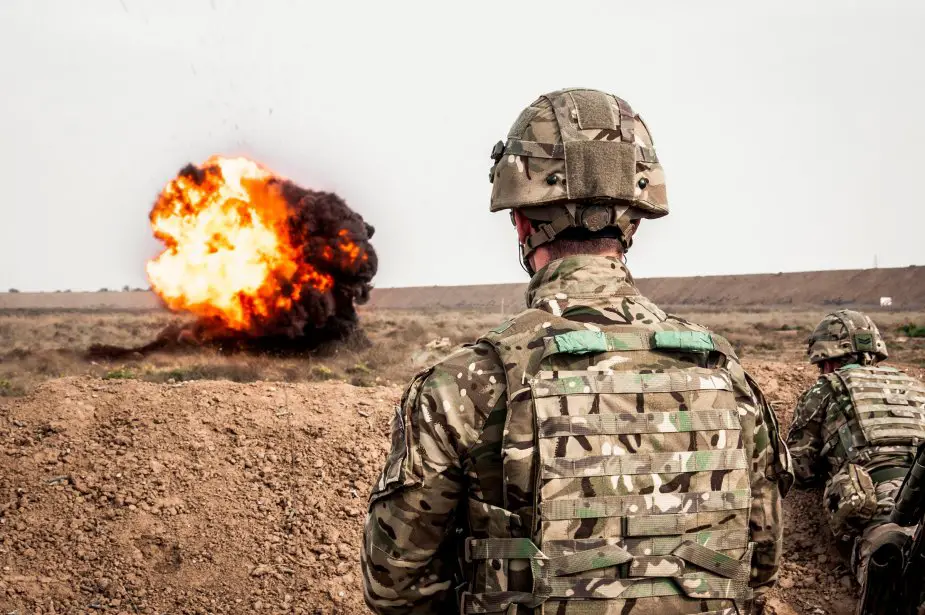The Defence Science and Technology Laboratory (DSTL), an executive agency sponsored by the British Ministry of Defence, has started to develop 3D printed explosives. The project aims to create new possibilities for various explosive effects using intricate designs enabled by 3D printing, and also to reduce transportation and storage costs. Michael Petch reports in 3D Printing Industry.

British sappers from the 3 Rifles Battlegroup in taji, Iraq, train Riflemen and their Swedish counterparts on urban breaching techniques, providing a valuable insight into working with explosives (Picture source: Twitter account of the British army)
Applying additive manufacturing to produce new energetic formulations is part of the MOD’s Future Energetics Project, established to train experts and develop new technologies. DSTL aims to ensure the contribution of innovative science and technology in the defense and security sector of the UK. Recognizing the importance of energetic experts for the security sector, the Ministry of Defence has established the Future Energetics Project in 2015. Since then, MOD has invested nearly £10 million in training experts, developing technologies and equipment.
The Future Energetics Project includes blast modeling, explosive trials, chemical synthesis, novel energetics manufacture, and small-scale hazard testing. To develop new energetic materials and methods, scientists of the project have started to implement additive manufacturing.
Applying 3D printing to produce explosive formulations is currently being tested. Since the different explosive effects are influenced by the geometry of the charge, scientists of this project examine the energetic characteristics, enabled to develop by additive manufacturing. Focusing on material extrusion and printer capabilities, the project aims to develop individual shapes for warzone missions. 3D printing customized charges on-demand may also reduce the cost of transportation and material usage. To make the process of mixing high explosive materials safer, DSTL uses acoustic energy instead of physical blades. Therefore, formulations are manufactured in a LabRAM resonant acoustic mixer.
To reduce cost and improve weaponry efficiency, the Australian government has awarded USD $2 million to research institutions to develop methods to 3D print energetic materials. Professor David Lewis, a polymer specialist at the awarded Flinders University, said, “The ability to develop systems like this is the next generation of additive manufacturing and is the key to this technology becoming mainstream.” In Indiana, professors of Purdue University have 3D printed energetic materials without voids. Professor Jeffrey Rhoads commented, “We have shown that we can print these energetic materials without voids, which is key. Voids are bad in energetic materials because they typically lead to inconsistent, sometimes catastrophic burns.”














